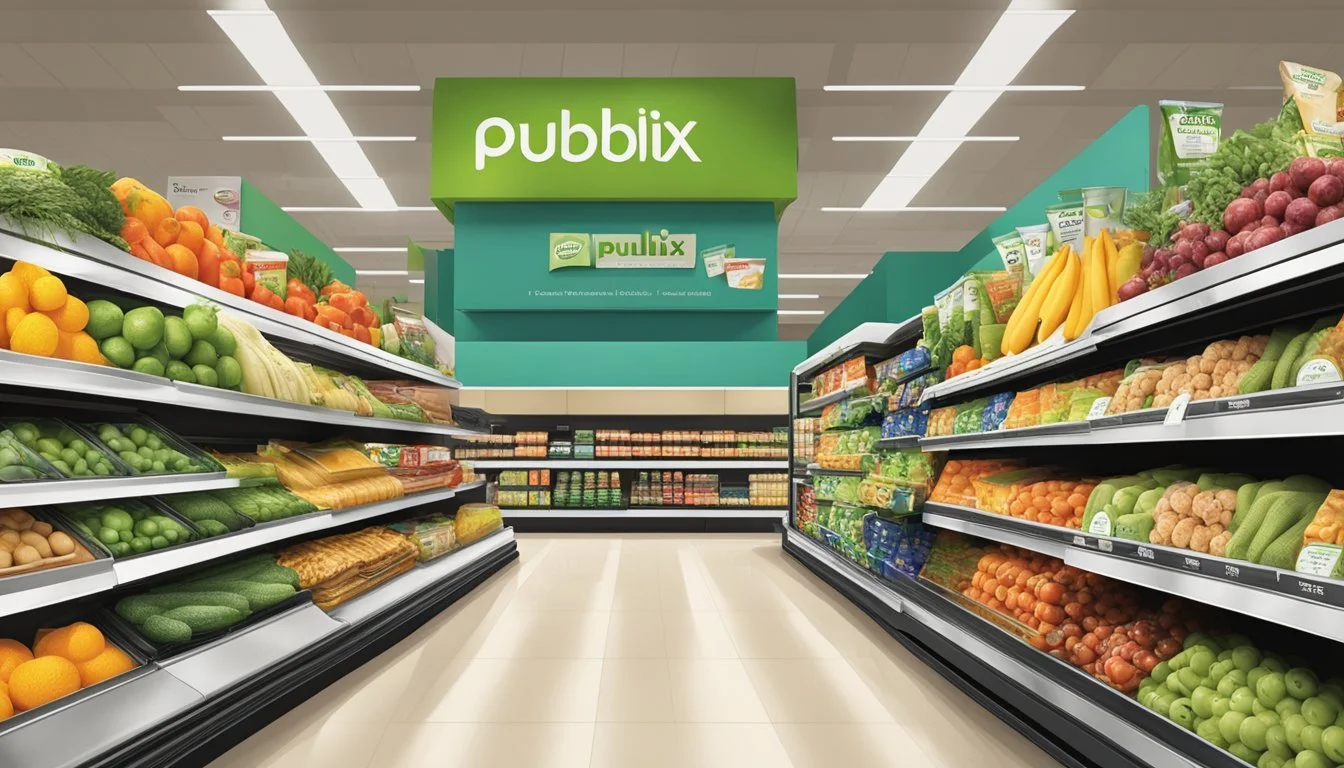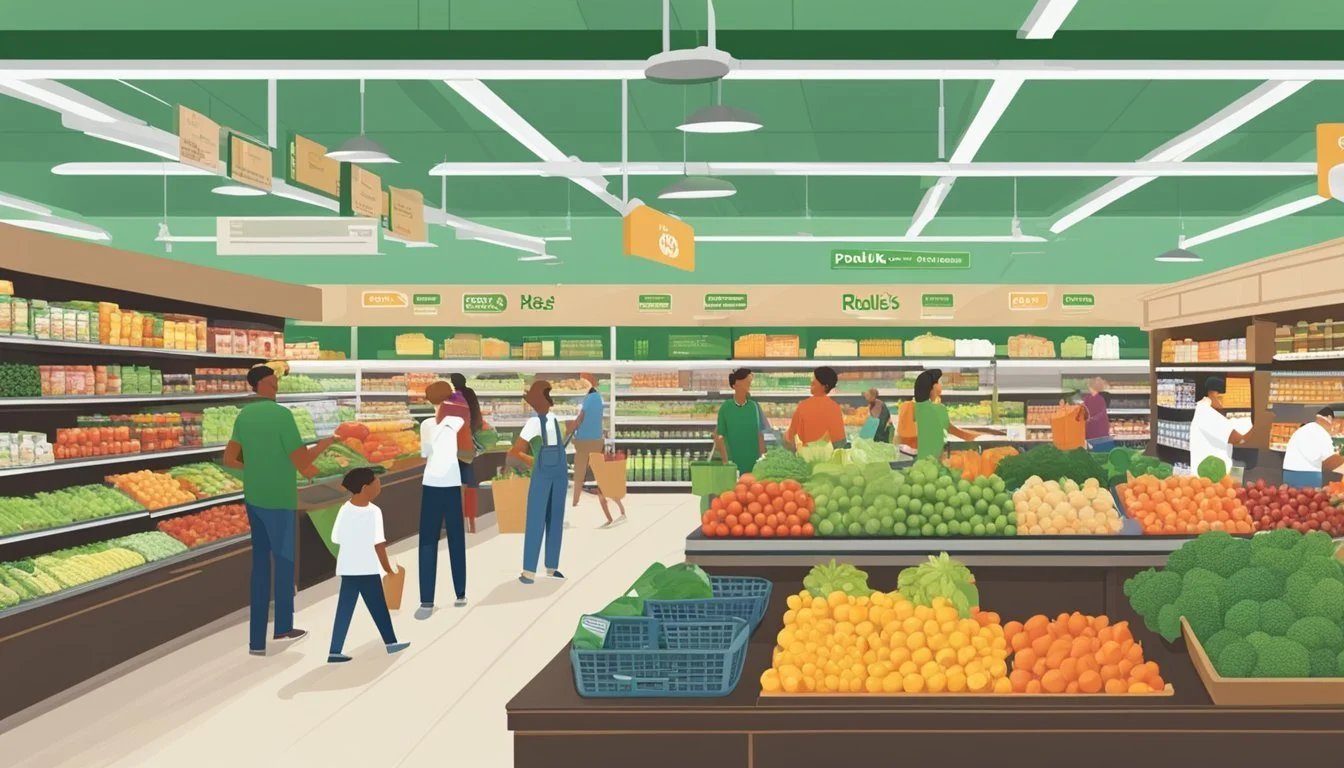Publix vs Raley's
A Comprehensive Comparison of Quality and Value
Grocery shopping experiences can vary widely depending on the store you choose. Publix and Raley's are two popular regional chains that offer distinct advantages to their customers. While both aim to provide quality products and service, they cater to different markets and have unique strengths.
Publix generally offers better overall value and customer service compared to Raley's, making it the preferred choice for many shoppers. Publix is known for its clean stores, friendly staff, and high-quality store brand products. The company's "Publix Promise" guarantees customer satisfaction and often leads to positive shopping experiences.
Raley's, on the other hand, focuses on providing a more upscale shopping environment with an emphasis on organic and locally-sourced products. While this approach appeals to health-conscious consumers, it can result in higher prices compared to Publix. The choice between these two grocers ultimately depends on individual preferences and priorities when it comes to price, product selection, and shopping atmosphere.
Company Backgrounds
Publix and Raley's are two prominent supermarket chains in the United States, each with its own unique history and regional presence. Both companies have grown from humble beginnings to become significant players in the grocery industry.
Publix Overview
Publix Super Markets, Inc. was founded in 1930 by George W. Jenkins in Winter Haven, Florida. The company started as a single store and has since expanded to become the largest employee-owned grocery chain in the United States. Publix operates over 1,200 stores across seven southeastern states.
The company is known for its exceptional customer service and high-quality products. Publix has consistently ranked among the top supermarkets in customer satisfaction surveys. Its slogan, "Where Shopping is a Pleasure," reflects its commitment to providing a positive shopping experience.
Publix offers a range of services, including pharmacies, bakeries, and delis. The company also produces its own line of private-label products.
Raley's History
Raley's Supermarkets was established in 1935 by Thomas P. Raley in Placerville, California. The company has remained family-owned and independently operated since its inception. Raley's has grown to include several brands under its umbrella, such as Bel Air, Nob Hill Foods, and Raley's O-N-E Market.
The company primarily serves Northern California and Nevada, with a strong presence in the Sacramento area. Raley's has expanded its reach through strategic acquisitions, including the purchase of the Bashas' family of stores in 2021.
Raley's is recognized for its focus on health and wellness, offering a wide selection of organic and locally sourced products. The company has implemented various sustainability initiatives and community outreach programs.
Store Locations and Accessibility
Publix and Raley's have distinct geographical footprints, serving different regions of the United States. Their store distributions impact customer accessibility and shopping convenience.
Publix Geographic Reach
Publix operates over 1,300 stores across seven southeastern states. Florida hosts the majority of Publix locations, with over 800 stores. Georgia follows with about 190 stores. The chain also has a significant presence in Alabama, South Carolina, Tennessee, North Carolina, and Virginia.
Publix focuses on suburban and urban areas, often anchoring shopping centers and strip malls. Their stores are typically found in middle to upper-income neighborhoods. The company's expansion strategy targets population growth areas within its existing markets.
Raley's Store Distribution
Raley's maintains a smaller footprint, with approximately 230 stores concentrated in Northern California and Nevada. The majority of Raley's locations are in California, particularly in the Sacramento metropolitan area and Central Valley.
Raley's operates under several banners, including Raley's, Bel Air, Nob Hill Foods, and Raley's O-N-E Market. The company serves diverse communities, from urban centers to rural towns. Raley's stores are often found in neighborhood shopping centers and standalone locations.
In 2021, Raley's expanded its reach by acquiring the Bashas' family of stores in Arizona, adding about 100 locations to its network.
Product Range and Quality
Publix and Raley's offer diverse selections of fresh and prepared foods. Both chains prioritize quality across departments, with some notable differences in their offerings and specialties.
Produce and Organic Offerings
Publix boasts an extensive produce section with a wide variety of fresh fruits and vegetables. Their organic selection has expanded in recent years, catering to health-conscious shoppers. Raley's emphasizes locally sourced produce when possible, partnering with regional farmers.
Both stores maintain high standards for produce quality, but Raley's "Farm to Fork" program gives them an edge in freshness for seasonal items. Publix counters with competitive pricing on organic options.
Meat and Seafood Selections
Publix is known for its full-service meat department, offering custom cuts and friendly butchers. Their seafood counter provides a good range of fresh and frozen options. Raley's matches this with high-quality meats and an emphasis on sustainably sourced seafood.
Raley's "Nob Hill" premium meat line is a standout feature. Publix excels in variety, especially for processed meats and marinated options.
In-Store Bakery and Deli
Publix shines in this category with its renowned bakery. Their custom cakes and fresh-baked bread are customer favorites. The deli offers a wide range of prepared foods and Publix's famous sub sandwiches.
Raley's bakeries produce artisanal bread and pastries daily. Their deli focuses on healthier prepared meal options and rotisserie chickens. Both chains prioritize quality ingredients in their bakery and deli items.
Raley's has an edge in gourmet cheese selections. Publix offers more variety in pre-packaged deli meats and salads.
Pricing Comparison
Publix and Raley's employ different pricing strategies to attract customers. Their approaches to everyday item costs and savings programs impact overall affordability for shoppers.
Cost of Everyday Items
Publix tends to have higher prices on everyday grocery items compared to some competitors. Their focus on quality and customer service often results in slightly elevated costs. In contrast, Raley's aims for more competitive pricing on staple products.
A typical basket of common items like bread, milk, eggs, and produce may cost 5-10% more at Publix than at Raley's. However, Publix frequently runs "Buy One, Get One Free" promotions that can offset higher base prices for savvy shoppers.
Raley's keeps costs down on store-brand items, offering savings of 10-20% compared to name brands. Their "Raley's Something Extra" program provides additional discounts on select products each week.
Discounts and Savings Programs
Both chains offer loyalty programs to help customers save. Publix's digital coupons can be loaded to accounts for easy redemption at checkout. Their weekly ad features specials across departments.
Raley's "Something Extra" program provides personalized deals based on purchase history. Members earn points on purchases to redeem for discounts. The chain also offers fuel rewards at participating gas stations.
Publix does not have a formal fuel rewards program but occasionally partners with gas stations for limited-time promotions. Their senior discount day offers 5% off purchases for customers 60 and older on Wednesdays.
Raley's runs periodic "mix and match" sales where shoppers can combine different items to reach discount thresholds. This flexibility allows for customized savings based on household needs.
Customer Experience
Publix and Raley's both prioritize customer experience, but they take different approaches. Each chain offers unique services and focuses on key areas to enhance shopper satisfaction.
In-Store Services
Publix provides a wide range of in-store services. Their pharmacies are known for excellent customer care and free medication programs. The deli counter offers custom sandwiches and prepared meals.
Raley's features full-service meat and seafood departments. Their stores often include specialty cheese counters and wine experts. Some locations have sushi bars and coffee shops.
Both chains offer online ordering with curbside pickup. Publix partners with Instacart for home delivery, while Raley's has its own delivery service in select areas.
Customer Support and Satisfaction
Publix consistently ranks high in customer satisfaction surveys. Their "where shopping is a pleasure" motto reflects their commitment to service. Employees are known for being friendly and helpful.
Raley's focuses on personalized service. They train staff to assist customers with special dietary needs. The company emphasizes building relationships with shoppers.
Both chains have loyalty programs. Publix offers digital coupons and personalized deals. Raley's Something Extra program provides customized rewards and exclusive discounts.
Store Cleanliness and Organization
Publix maintains high standards for store cleanliness. Aisles are wide and well-lit. Products are neatly organized and regularly restocked. Floors are kept spotless throughout the day.
Raley's stores feature clear signage and logical product placement. They focus on creating an inviting atmosphere with attractive displays. The produce section is often highlighted as a focal point.
Both chains prioritize food safety. They have strict protocols for handling perishables and maintaining proper temperatures. Regular inspections ensure compliance with health standards.
Brand Reputation and Consumer Perception
Publix and Raley's have distinct reputations among consumers. Their brand perceptions are shaped by various factors, including customer experiences, market research, and community involvement.
Market Research and Surveys
Consumer Reports regularly conducts surveys to assess grocery store performance. Publix consistently ranks high in these evaluations, with customers praising its cleanliness and service quality. The supermarket chain often receives high ratings for its produce selection and store-brand products.
Raley's, while less nationally recognized, maintains a strong regional presence. Local surveys indicate that consumers appreciate Raley's focus on fresh, high-quality products. The company's commitment to customer service also contributes to positive perceptions among shoppers in its operating areas.
Sustainability and Community Impact
Both Publix and Raley's have implemented environmentally friendly initiatives. Publix has invested in energy-efficient store designs and recycling programs. The company's efforts have earned recognition from environmental organizations.
Raley's emphasizes sustainability through its product sourcing and packaging choices. The chain has introduced compostable bags and increased its organic offerings. These actions resonate with environmentally conscious consumers.
Community involvement plays a crucial role in shaping brand perception. Publix's charitable foundation supports various causes, including hunger relief and youth programs. Raley's engages in local partnerships and food donation initiatives, strengthening its ties to the communities it serves.
Market Presence and Competitiveness
Publix and Raley's occupy distinct niches in the competitive grocery industry. Their market presence and strategic positioning reflect regional strengths and differing approaches to customer service and product offerings.
Presence in the Grocery Industry
Publix operates 1,237 stores, primarily in the southeastern United States. The chain has built a strong reputation for customer service excellence and a wide product selection. Publix's market saturation in Florida and expanding presence in neighboring states solidifies its position as a major regional player.
Raley's maintains a more focused geographic footprint with 124 stores, mainly in Northern California and Nevada. The company operates under several banners, including Bel Air Markets, Nob Hill Foods, and Raley's O-N-E. Raley's concentrated presence in the Sacramento area allows for deep community engagement and tailored local offerings.
Analysis of Main Competitors
Both Publix and Raley's face stiff competition from national chains and local grocers. Walmart, Kroger, and Target pose significant challenges with their extensive networks and competitive pricing. Whole Foods, now backed by Amazon, competes in the premium and organic segments.
Publix contends with regional powerhouses like Wegmans in some markets. Wegmans consistently ranks highly in customer satisfaction surveys, challenging Publix's service-oriented model. Trader Joe's unique product lineup and loyal customer base also present competition in the specialty grocery space.
Raley's main competitors in Northern California include Safeway and Save Mart. The company's focus on a smaller geographic area allows it to compete effectively against larger chains by emphasizing community connections and personalized service.






